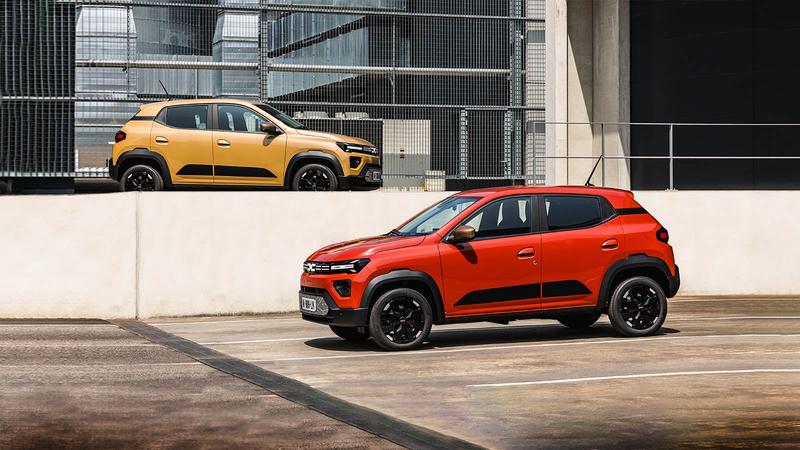
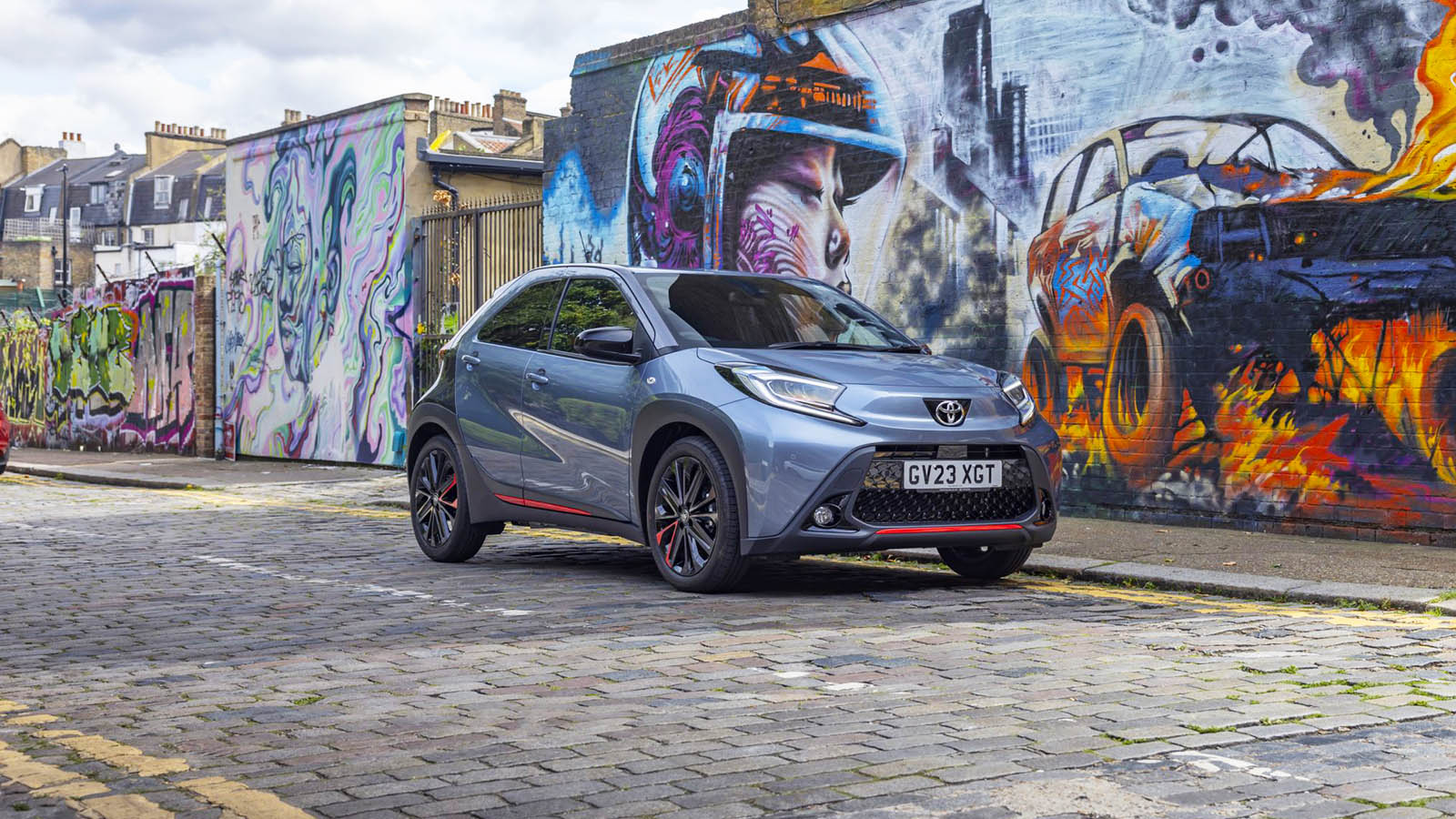
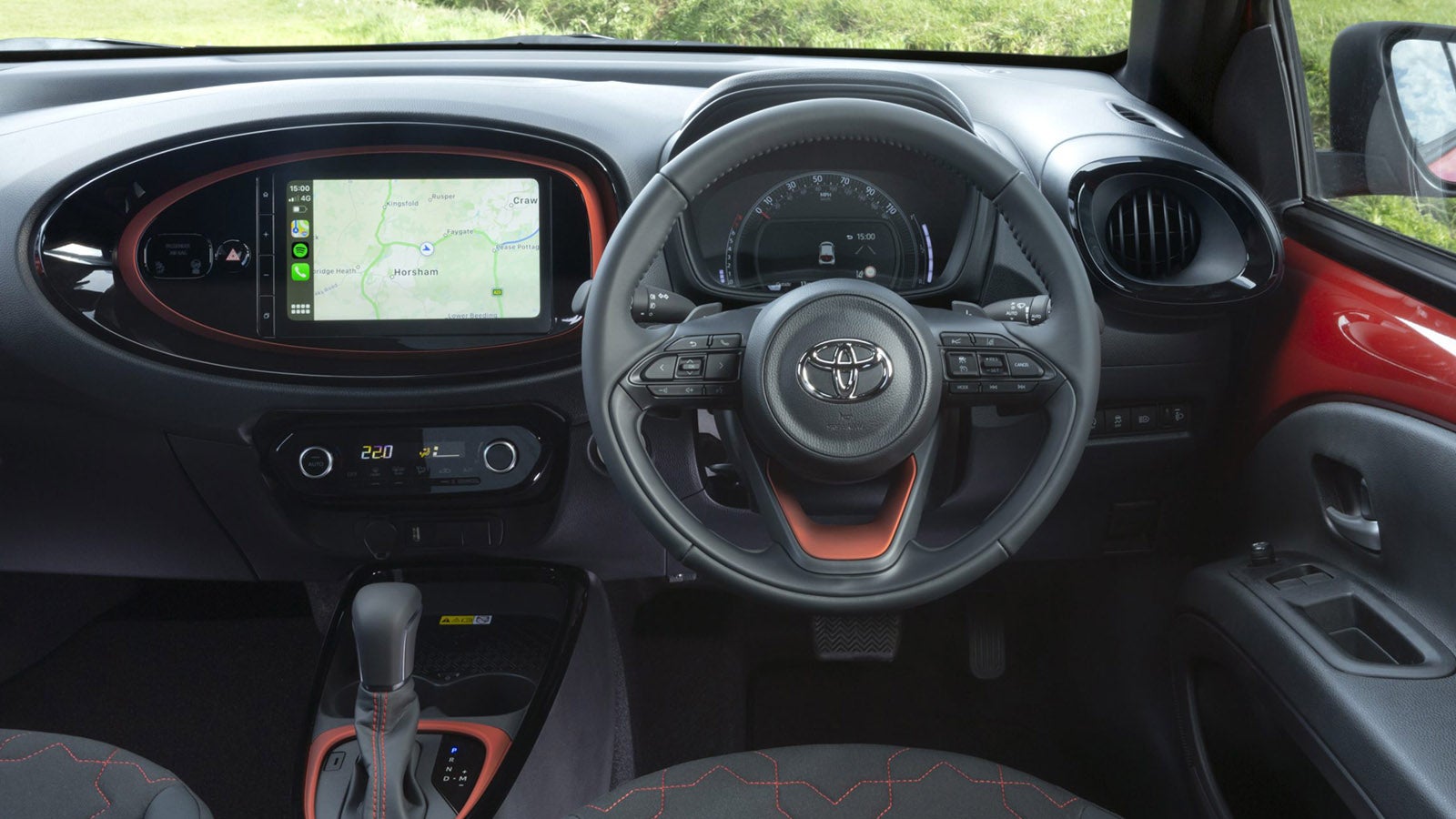


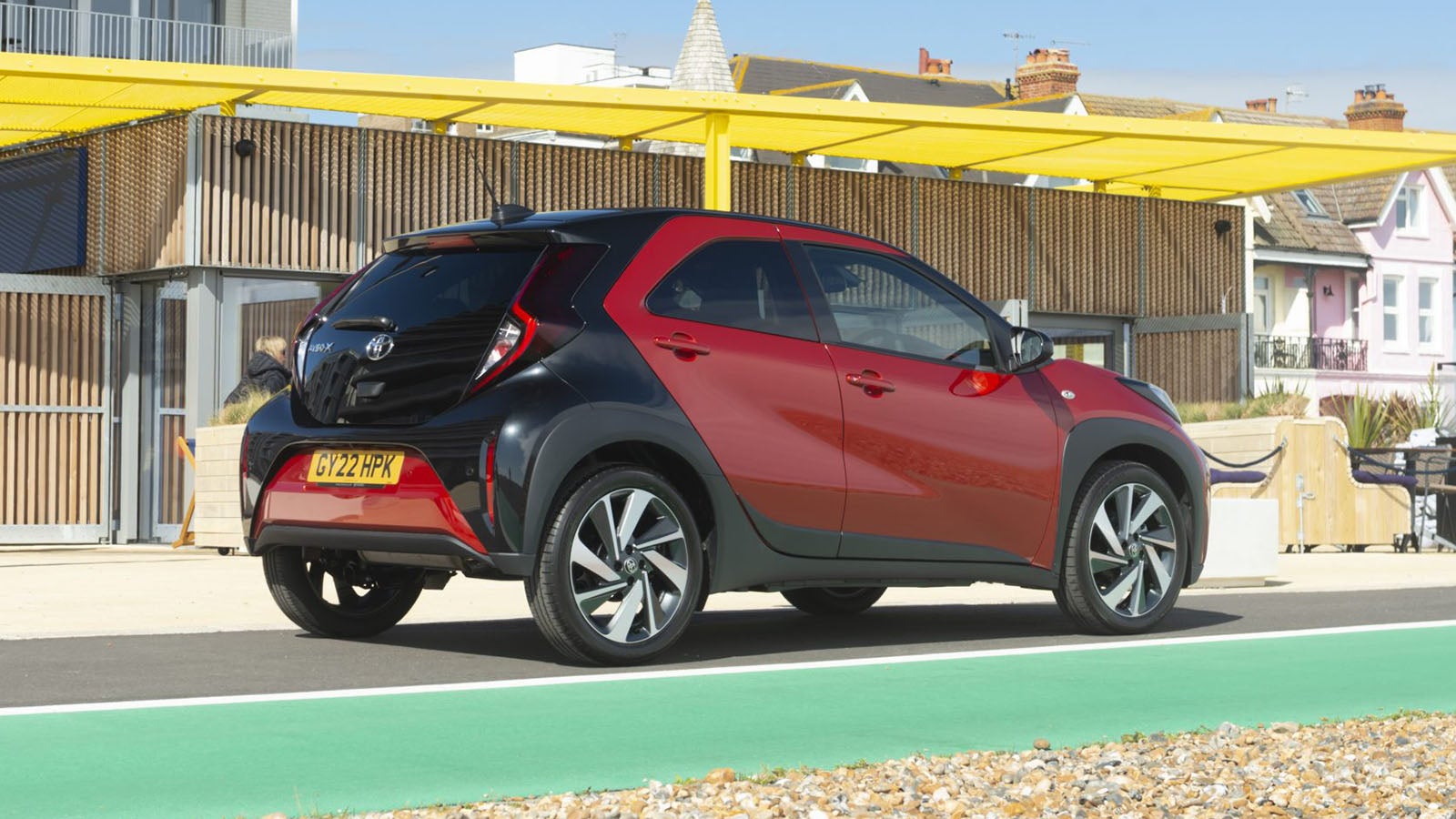
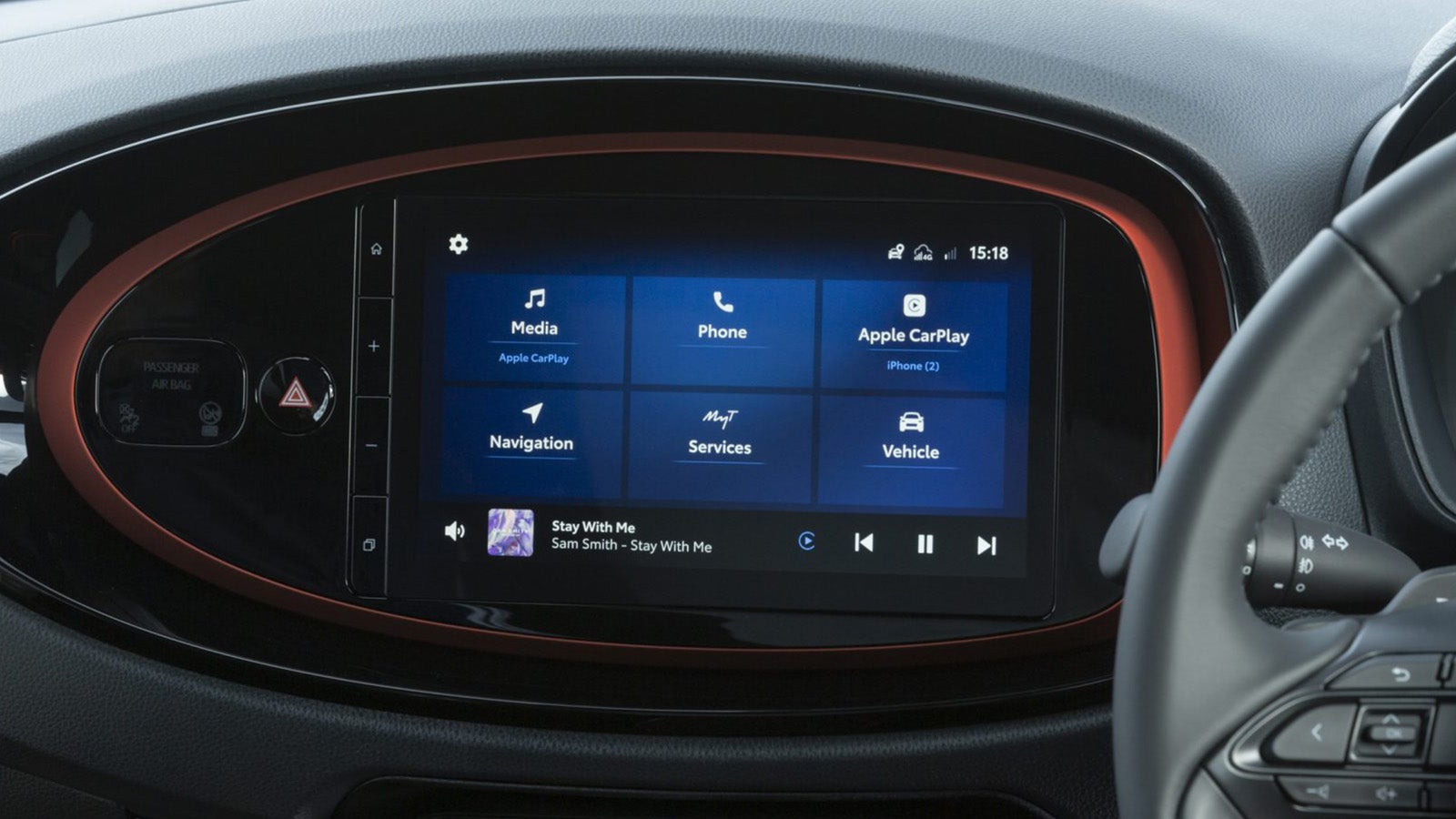
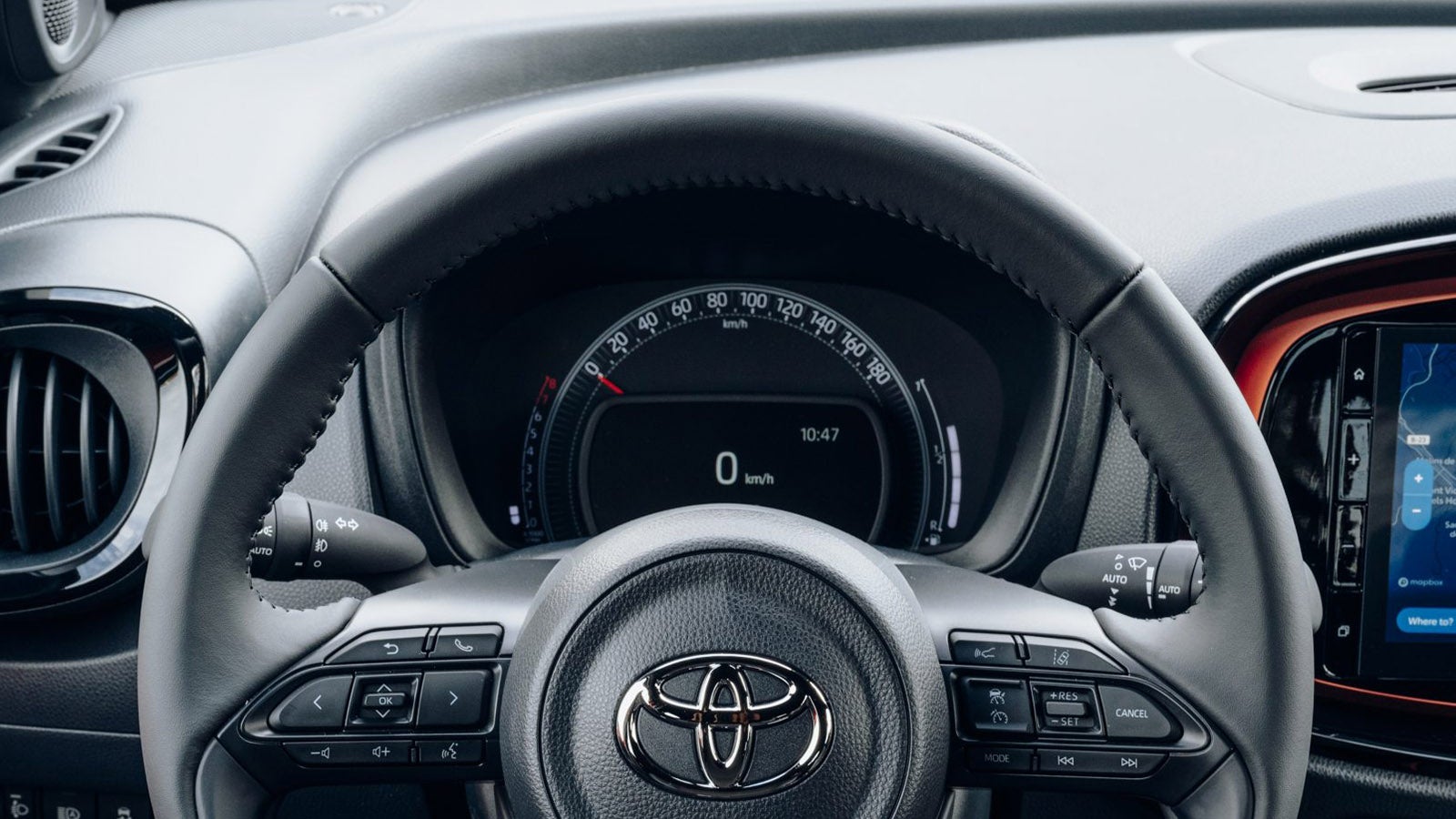

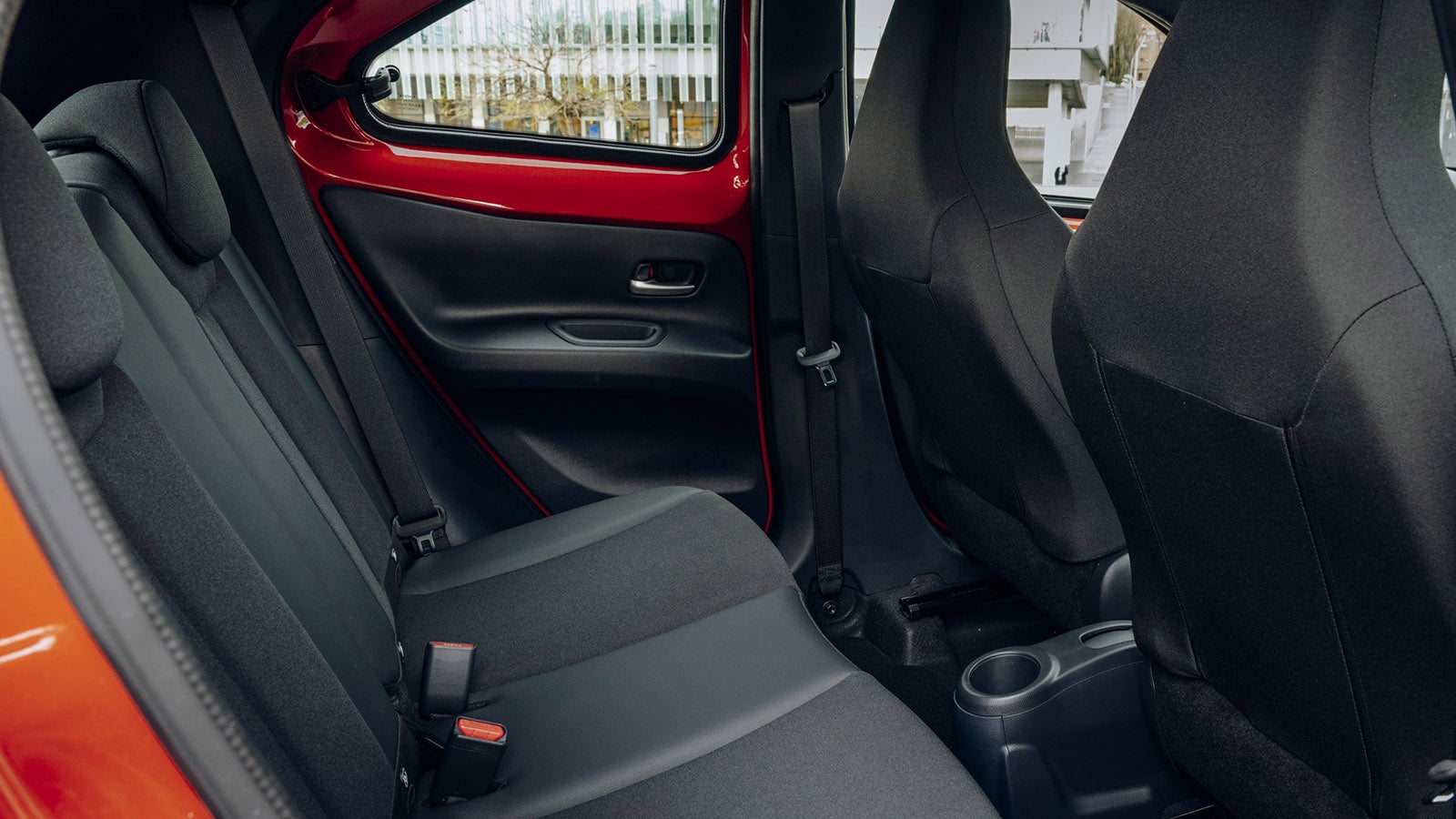
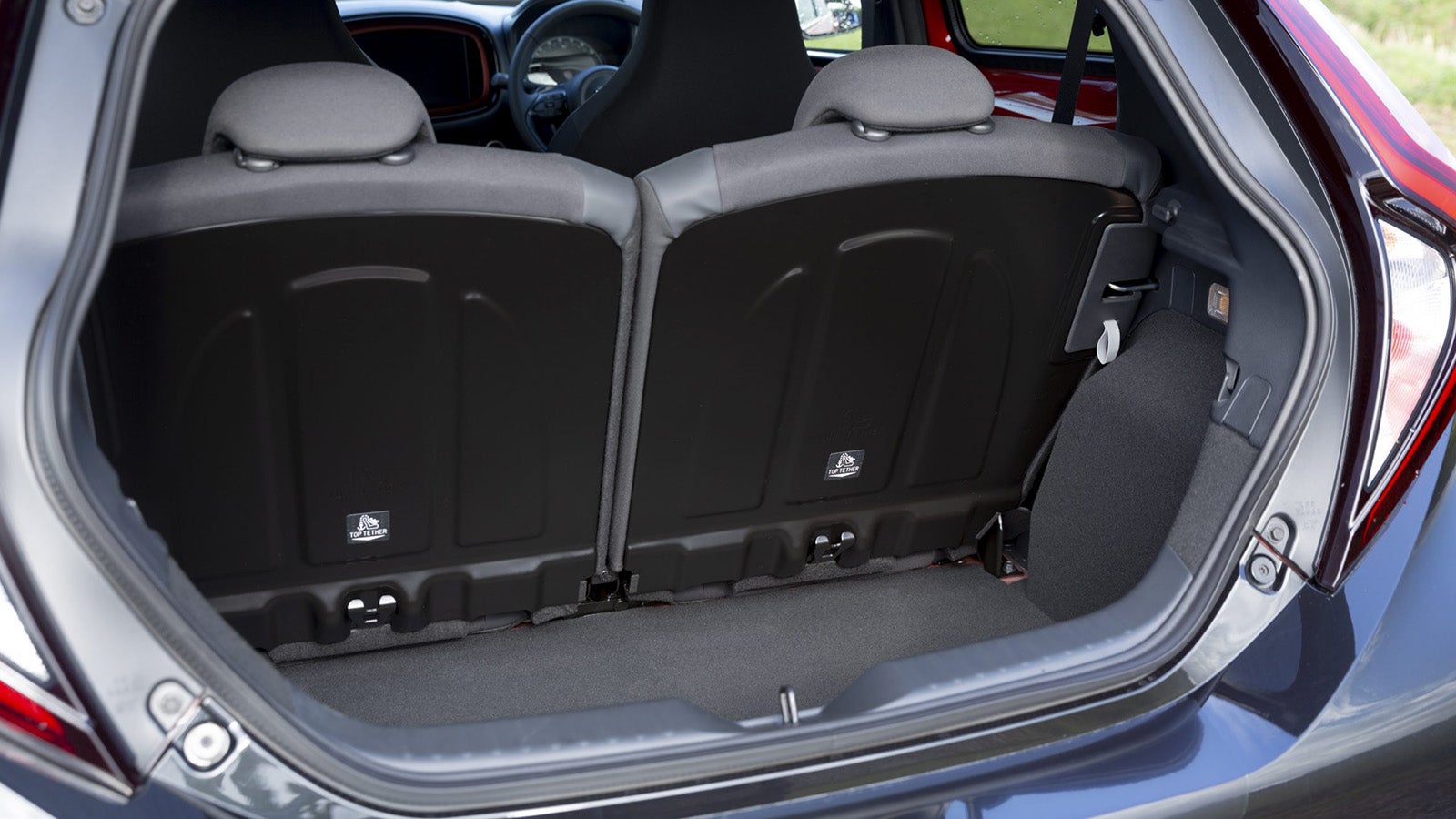
Toyota Aygo X Review
Some carmakers will slap grey plastic wheelarches on a hatchback, jack up the suspension by a fraction and call it an 'SUV'.
That's exactly what Toyota has done with the Aygo X. Give it a chance, however, because the Aygo X has lots of meaningful improvements over the standard Aygo hatchback that might make it worth the upgrade.
- Easy to drive
- Impressive ride comfort
- Toyota reliability and long warranty
- Still a small car
- Older rivals are more affordable
- Infotainment looks a bit dated
Should I buy a Toyota Aygo X?
Toyota wants you to think of the Aygo X as an 'SUV'. And, yes, the car has a taller ride height than the regular Aygo, bigger wheels and, of course, chunky plastic cladding around its wheels.
But it's not fooling anyone – this is a car built for the concrete jungle, not the jungle jungle. Its small petrol engine and front-wheel-drive layout are built for efficiency, not grunt – and the plastic wheelarches are more likely to protect from car-park dings than rock scrapes from the trails.
So, if we accept the Aygo X's jacked-up looks are merely skin-deep, we can begin to appreciate this car for what it truly is – a dramatically improved replacement for the standard Aygo. This is, in part, thanks to the fact the Aygo X is now mechanically related to the latest Yaris hatchback, with the engine being the only meaningful component shared with its predecessor.
The biggest upgrade is to the driving experience. Where the old Aygo hatch felt tinny and insubstantial, the Aygo X feels much more mature. Overhauled suspension means the car rides over bumps with grace, minimising both the impact felt through the seats and any audible thudding. Plus, the well-judged controls and taller-than-average seating position help you feel totally in command of the car, too.
Front-seat occupants might also spot the Aygo X's modern-looking dashboard, which is a massive improvement – both in style and usability – over the outgoing Aygo's cheap plastic paneling. You'll find proper buttons for key controls, as well as a standard-fit infotainment touchscreen with Apple CarPlay and Android Auto.
However, try as the Aygo X might, it still inherits some drawbacks from its predecessor – chiefly, the car's mediocre practicality. The rear seats are too small to carry passengers regularly, so you're better off thinking of them as occasional seats for short trips, or simply as extra storage. Things don't improve in the boot, which suffers from limited overall capacity and an awkwardly high load lip.
Interior and technology
Starting with the Aygo X's dashboard, there's quite a lot to like. There's a simple, easy-to-read instrument pod for the driver – mercifully unaffected by the industry's current obsession with busy digital driver's screens. In the middle, you'll find the infotainment screen within its own oval-shaped pod, with simple, intuitive climate control buttons beneath that. Generally, everything is laid out sensibly with a minimum of fuss.
Toyota's also managed to bring some style to the cabin, too. We're fans of the front air vents, which are housed in their own decorative pods that sweep back and intersect at the rear of the dashboard. You'll thank yourself for selecting your Aygo X in a bright colour, too, because the aforementioned air vents as well as door panel trims carry that colour into the cabin, which helps to break up the black plastic trim that's used everywhere else.
All models include a touchscreen infotainment system with standard-fit phone connectivity, and the majority of buyers are unlikely to be left wanting for any features beyond that. Top-spec Exclusive cars gain a bigger screen, along with built-in sat nav and Toyota's live services that let you remotely monitor information about your car.
The screen is positioned well and responds reasonably quickly to your inputs, but it does look a little old compared to the ultra-sharp screens you'll find in rivals from Hyundai and Honda. Toyota's graphics look a little 'Game Boy Colour' rather than like a product of the 21st century. That said, we appreciate the physical shortcut buttons and volume knob fitted to small and mid-size versions.
Standard safety technology is extensive. You get automatic headlights and high beams, traffic sign recognition, a reversing camera and driver fatigue monitoring. You'll also find automatic emergency braking, lane-keep assist and adaptive cruise control.
Practicality
You can look at this two ways. Many will see at the Aygo X's cabin and point out that it's very small, which is true and is likely the end of that conversation. However, if you're familiar with the old Aygo and its airing-cupboard-sized interior, you might appreciate the meaningful improvements its successor has made.
Space up front is good enough, with a respectable amount of adjustability in the seat to let you get comfortable. It's a bit annoying, however, that the steering wheel only adjusts for rake, not reach. You'll also appreciate the seating position, which is a few inches higher than the standard Aygo – not enough to tower over other cars like a proper SUV, but enough that you're not drowning in traffic among larger cars.
Rear-seat practicality is less impressive. For starters, the small rear doors don't open very wide, so you'll have to squeeze yourself through the awkward gap they create and, once you're in position, you'll spot that the small pop-out side windows don't let a lot of light into the back seats. Sit an average-sized adult in front and you'll have next to no space in the rear. If you actually want to carry rear passengers, those up front will have to compromise and press themselves up against the dashboard. For parents with kids in child seats, the sheer lack of space means we can't recommend the Aygo X as a family carrier…
…not that you'd be able to fit a pushchair in the boot, anyway. The Aygo X's 231-litre cargo area is larger than the likes of the Fiat 500 and is only a few litres down on the Hyundai i10 and Kia Picanto, but it's still not enough to carry a buggy, or even a large suitcase. A few shopping bags or a couple of cabin-sized cases is likely the limit for the little Toyota.
Access to the boot is less than ideal, too, with a tall load lip and noticeable intrusion from the brakelights, making it harder to lift heavy or awkwardly shaped objects into place. There are handy pull straps to fold the rear seats down, but these can only be accessed from the boot, which can be irritating if you're expecting to be able to do so from the side door.
Engines and performance
Toyota is hoping you like the sound of a 72hp 1.0-litre three-cylinder petrol engine – because that's all the choice you get under the Aygo X's bonnet.
We say 'like the sound' in a figurative sense, because you're probably not going to be a big fan of the way the engine actually sounds. With such a small amount of horsepower on tap, the engine has to work hard to get the Aygo X moving. That means most drives are accompanied by a near constant drone from under the bonnet as the engine battles to get up to speed.
There's enough power to cruise on the motorway, but steep inclines or fast country-road overtakes will require several gearchanges and a massive footful of throttle to achieve. Again, accompanied by an enormous racket as the engine strains to spin up.
Thankfully, the Aygo X is much easier to live with at urban speeds, where its limited power is less of a drawback. You'll also find the noise dies down substantially when you don't have to thrash the engine for all it's worth.
A snappy manual gearbox is fitted as standard with a CVT-style automatic gearbox available as an option. This is a particularly good choice if you're after a small automatic car because most rivals, as well as the old Aygo, use automated-manual-style autos, which are jerky and unrefined. The Aygo X's CVT auto, in comparison, doesn't rob the car of any performance and doesn't suffer from any of the awkward bucking you get from its automated-manual counterparts.
Driving and comfort
Driving the old Aygo was more of a chore than a pleasure. Between its noisy, gutless engine, its cheap cabin, and its bouncy, wobbly driving experience, there was little to praise from behind the wheel. The Aygo X, however, is substantially better.
The biggest upgrade comes in the form of ride quality. On the move, the Aygo X has excellent body control, always giving you a reassuring sense of grip, while resisting being bounced off line by large dimples in the road. This is enhanced by the fact the Aygo X's suspension has been set up to be soft and forgiving – parrying big bumps with the grace of a much larger, heavier car, while also tuning out the higher-frequency vibrations you get over poor road surfaces.
That said, it's not quite as entertaining as the likes of the Kia Picanto or Volkswagen Up. The steering is accurate but its weighting is a little inconsistent and, while you can place the Aygo X within its lane with confidence, it doesn't have the sporty apex-hunting agility of the best in class. You also miss out on the more powerful engine options offered in top-spec Kia, Hyundai and Volkswagen rivals, which are worth hunting down if you do more motorway mileage.
For most potential Aygo X buyers, however, this last degree of driver engagement is an easy tradeoff to make for the car's comfort and everyday liveability.
































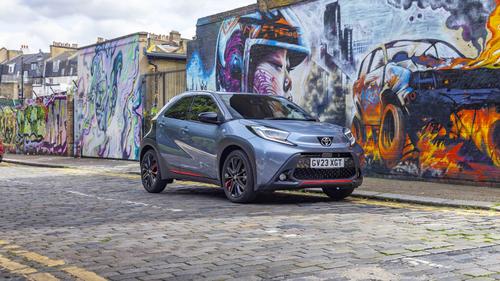
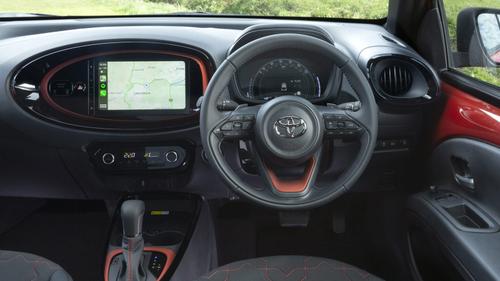
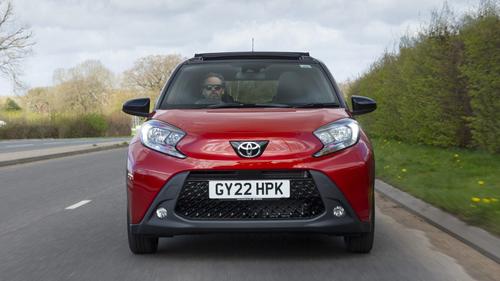
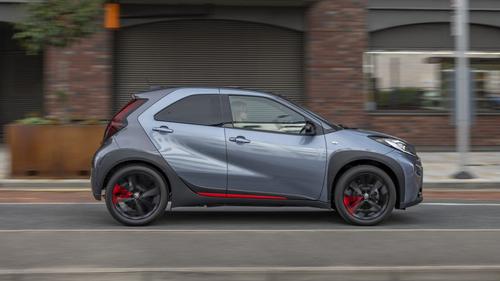
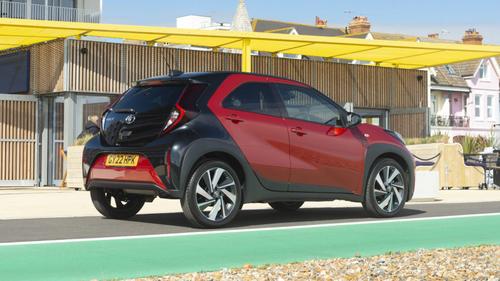
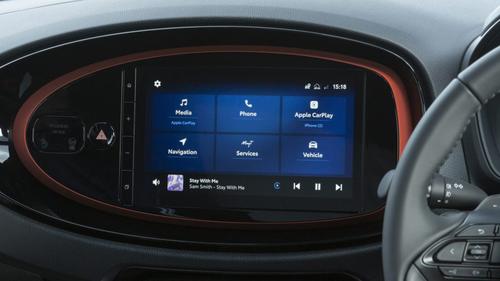
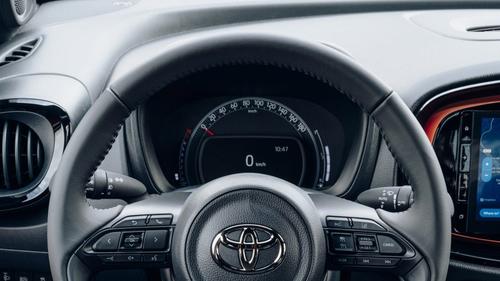
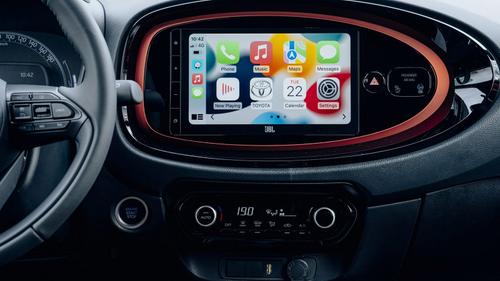
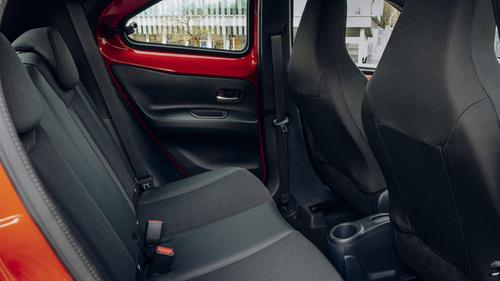
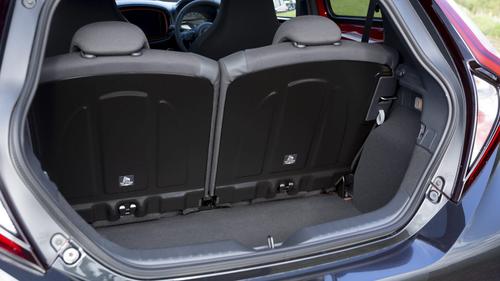





.jpg&w=800&q=75)
